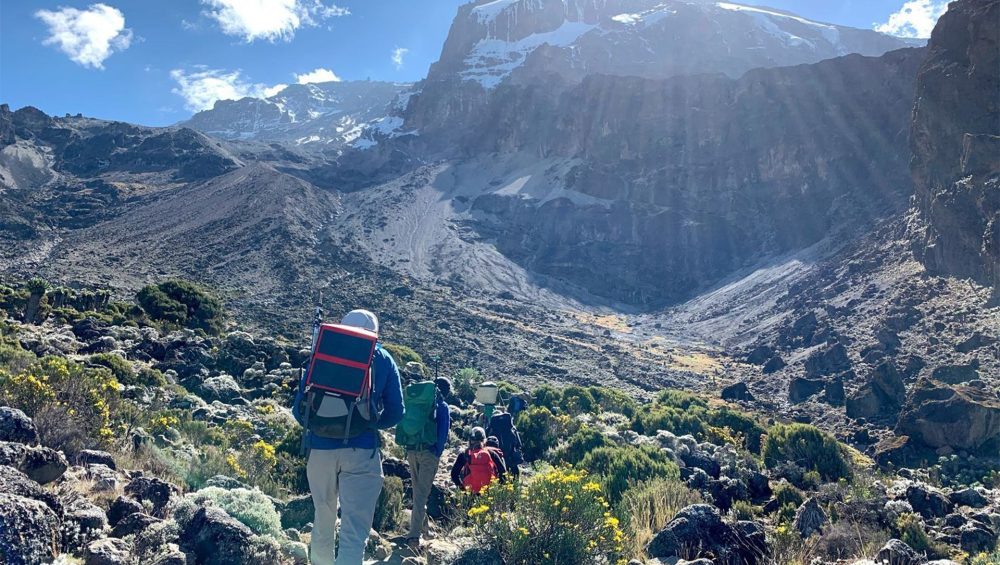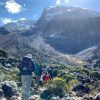If you’re considering the awe-inspiring journey of climbing Mount Kilimanjaro, proper training is essential for your safety and success. The climb’s difficulty level can vary greatly depending on factors such as altitude, hiking experience, and physical fitness. This comprehensive guide will walk you through the necessary steps to train effectively and thoroughly for your Kilimanjaro expedition.
Embarking on the Kilimanjaro adventure requires meticulous preparation, as conquering this iconic mountain demands more than just enthusiasm. Success on Kilimanjaro hinges on several key elements, each contributing to a smoother and more rewarding climb:
1. Acclimatization is Key: A pivotal factor for reaching the summit is acclimatization, the process of your body adapting to the high altitude conditions on the mountain. Spending more days on Mount Kilimanjaro significantly enhances your chances of acclimatizing successfully and making it to the top. To maximize your odds, opt for a minimum of 8-9 days on the mountain, focusing on either the Lemosho or Northern circuit route. These longer routes offer better acclimatization opportunities, allowing your body to adjust to the altitude gradually and reducing the risk of altitude-related illnesses.
2. Learn from Those Who’ve Climbed Before: Insights from those who have previously conquered Kilimanjaro are invaluable. Engaging with experienced climbers can provide you with practical tips and firsthand knowledge about how to prepare effectively for this extraordinary journey. Gathering insights from seasoned trekkers can significantly enhance your readiness and safety on the mountain.
3. Guided by the Best: A trustworthy guiding crew plays a pivotal role in your success. Experienced guides are well-versed in the challenges posed by Kilimanjaro and can provide you with valuable guidance, ensuring your safety and enjoyment throughout the climb.
Effective Training: The Foundation Of Your Success
To tackle the rigors of Kilimanjaro successfully, a well-rounded training regimen is essential. Training should focus on building the required physical endurance, strength, and mental resilience.
1) Assess Your Starting Point: Before diving into a training plan, evaluate your current fitness level. If your training frequency falls short of 3-4 days a week, strive to incrementally increase your workouts to a consistent 6-day routine. Your training should center on endurance-building exercises, strength training, and preparations for descending.
2) Utilize Available Resources: Consider the training facilities available to you. Do you have access to hills for uphill and downhill training? Are there tall buildings, a 30% incline treadmill, or a stairmaster you can use? Utilize the resources at your disposal to create a well-rounded training routine.
3) Structured Heart Rate Training: To optimize your training, ensure that your regimen includes at least 10 hours of training per week and that you’re training within the appropriate heart rate zones. Tailoring your training to these zones enhances your cardiovascular fitness and prepares you for the altitude challenges ahead.
Specificity Is Key
1) Training Tailored to the Terrain: Training for Kilimanjaro necessitates a mountain-specific approach. Unlike regular running, Kilimanjaro demands a regimen tailored to the mountainous terrain. Mountain-specific training involves uphill and downhill hiking with a weighted backpack, mirroring the demands of the climb. Around 70% of your training should mirror the specific movements required for trekking on uneven slopes.
2) Uphill and Downhill Training: Approximately 30-degree angle terrains await you on summit night. Thus, focus on training that emulates these conditions. Regularly hike up and down hills, aiming for gradual increases in weight and duration. If hills aren’t accessible, opt for a gym-based approach, employing a stairmaster and a 30-degree incline treadmill with a weighted backpack.
3) Regular and Varied Training: The foundation of your preparation is consistency. Aim for 5-6 training sessions per week and complement these with extended hikes on days off. This routine will mirror the physical demands you’ll face during the climb.
4) Long Hikes: Gradually build up to long-duration hill walks lasting a minimum of 5 hours, encompassing a 1,000m/3,380 feet ascent and descent. If hills are scarce, identify tall buildings or staircases to practice ascending and descending with a weighted backpack.
The Mental Element
Mental Readiness Matters: Beyond physical conditioning, mental preparedness is vital. Endurance training not only develops physical strength but also cultivates mental resilience. As you prepare, simulate the mental challenges you’ll encounter on Kilimanjaro. Get accustomed to your gear, including trekking boots, sleeping bags, and backpacks.
Maintain a Positive Attitude: An optimistic outlook is crucial during challenges. Recognize that countless individuals have triumphed over Kilimanjaro before you, and with proper training and mindset, you can too. While difficulties may arise, remember that your experienced guides will provide support and motivation throughout your journey.
Multi-Day Training For Multi-Day Trekking
Prepare for Extended Hikes: Kilimanjaro involves multi-day hikes, necessitating comprehensive preparation. Engaging in one hill walk weekly won’t suffice. You’ll be walking for hours on consecutive days, requiring training with a backpack. Your backpack will contain essentials like water, spare layers, rain gear, snacks, a camera, medical supplies, and sun cream. Familiarize yourself with carrying double the weight you intend to take on the trek.
Manage Distances and Elevation Gains: Strive for progressive increases in both distance and elevation during training. Your training should mirror the demands of the Kilimanjaro climb. Use a structured approach that progresses from a base phase to a build phase and eventually peaks to ensure you’re optimally prepared.
Nutrition And Diversified Training
Fuel Your Body: Nutrition plays a vital role in your training. Maintain a balanced diet to support your training regime. Proper carbohydrate intake sustains your energy levels during workouts and aids recovery.
Diversify Training Activities: Embrace a multifaceted training approach. While hill walking and stairs are foundational, engage in additional activities like jogging, uphill biking, yoga, stretching, and strength training. A diverse regimen enhances core stability and overall fitness.
Commit To Your Preparation
A successful Kilimanjaro climb requires not only investment in gear and logistics but also in training. Don’t undermine your efforts by neglecting this crucial aspect.
With a structured training plan, mental fortitude, and a positive attitude, you’ll stand well-equipped to conquer Kilimanjaro. The journey is as much about the climb as it is about your transformation through preparation. Approach your training regimen with dedication, and you’ll be prepared to ascend Kilimanjaro’s peaks and create memories that will last a lifetime.




